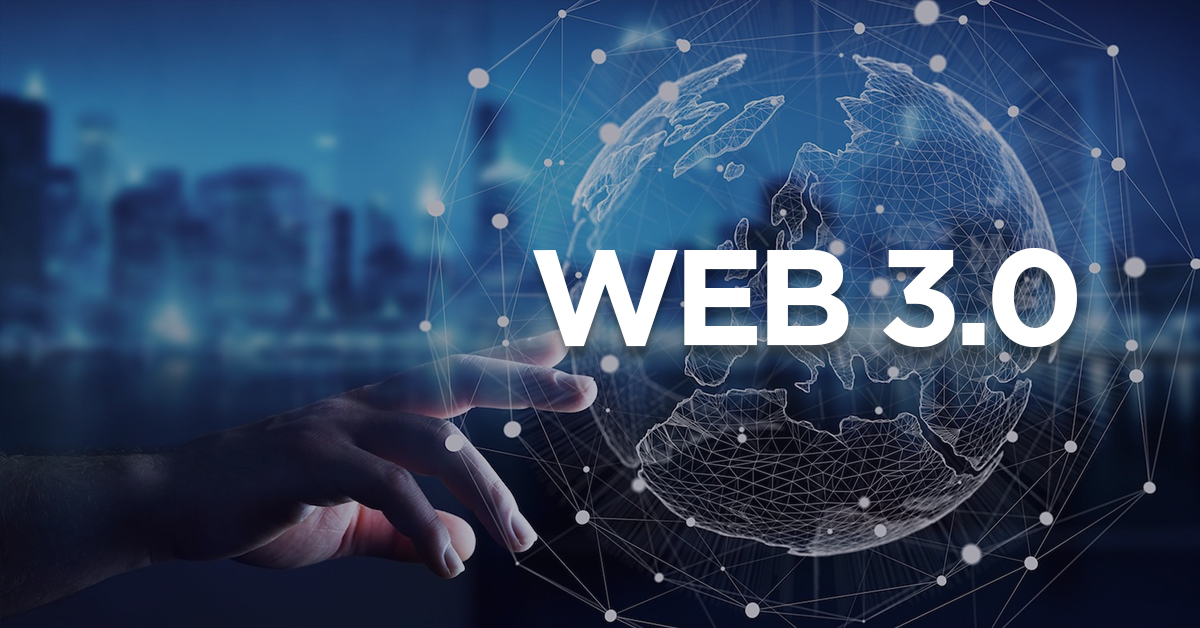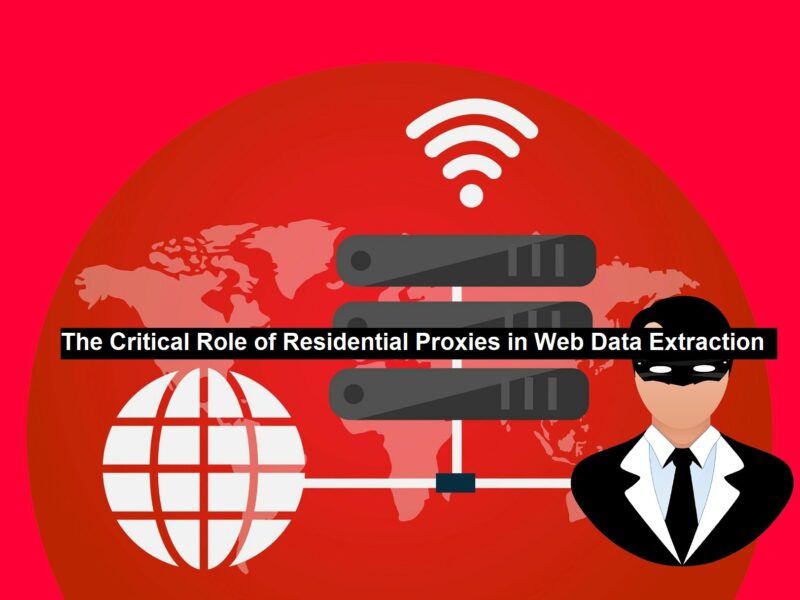With the advent of 2020, the formation of a digital currency in the external direction began. In this story, there may be an active development of symptoms, cryptocurrencies, metaverses, and NFT products. Along with the updates, many rumors appeared, and a new generation of the Internet is possible – Web 3.0. In 2021, about 34,000 people were connected to the Web 3.0 project, there were many contributions of capital and companies with a valuation of more than $100 million. Let’s try to analyze the main observations and forecasts that you need to watch in 2022-2023.
What is Web 3.0?
In simple words, Web 3.0 is a new generation of the Internet and its development, the essence of which is decentralization. Whidegroup believes that detection enables users to fully own, manage their own content, and hide personal data. The network itself will be an open and secure structure.
In the period from 2010-2020, there can always be active development and work in the field of machine learning, artificial intelligence, as well as surveillance. It is these concepts that underlie the implementation of the Internet of the future.
The official Web 3.0 terminology was written 15 years ago by an executive at Netscape.com. Jason Calacanis made an association that in the future the Internet will be several times better, and any resource will no longer carry useless information for the user, the content will be generated by professionals using a separate platform. He himself could not describe the platform for implementation, but in 2022 it became obvious that this was Web 3.0. The platform is not single and there are many rare segments at once. E-commerce CRM software is evolving to incorporate Web 3.0 trends such as blockchain, decentralized storage, and artificial intelligence.
One of the founders of DAO Synergis, Vladimir Popov, describes Web 3.0 as a multi-grid, where there is not only the web but the following elements:
- Mesh networks.
- Decentralized networks such as IPFS or Bitcoin.
In his opinion, the work should be carried out in the form of a modular system, within which each module is co-dependent on the others, but not subordinate to them. For example, when one element is disabled, the entire network will continue to work, and it will not be possible to turn it off.
Internet development
In the 90s, Web 1.0 first appeared and people could show their content through websites, and users could only search and use the information received. Today, Web 2.0 is used, and the orientation of the network is aimed at the user and increasing the volume of information. The Software Development Life Cycle (SDLC) for Web 3.0 trends is becoming more agile and iterative. People themselves can create content, manage it, and also contact other network members through blogs, and social networks. networks and similar platforms. The main disadvantage is increased centralization. Although there is a lot of content from private users, it is in fact owned by Facebook, Google, and the like.
Due to the described shortcoming, there is a problem with censorship, transfer of personal data to 3rd parties, and active targeting. To solve the problem, there is a need for a distributed system, and Web 3.0 can solve this.
After the implementation of the new network, users will have 100% ownership of their own content, as well as monetize it and exchange data using decentralization services. The simplest formula for the next generation of the internet is read, create, and own.
The modern Internet is subject to large corporations, they control any idea of a person and his content. The conceptual difference of Web 3.0 lies in the possibility of returning copyrights to the present owners and creating a new economy, a new system.
Blockchain is a must for Web 3.0, eliminating the human influence Marketing and sales specialist Gilles DC (Gilles Disi) believes that the implementation of the blockchain is very important and will help eliminate the supply chain of information from a person to an intermediary.
The blockchain itself is a decentralized digital ledger that stores information about who owns what on the network:
- money;
- copyright;
- ownership;
- medical records.
Any record refers to the previous one and an information chain appears that cannot be faked. To add new statements, it is important to have miners who store copies of the blockchain on their equipment, protecting information from loss, checking, and confirming all operations. This is done with the help of mathematical calculations. The greater the power of the equipment, the higher the chances of speeding up the data processing procedure, for which miners receive a certain percentage of income in cryptocurrency. Blockchain helps to exclude independent checks of records by ordinary users, this will be done by other network members.
Features of the decentralized Internet Web 3.0
In the Internet of the future, any author receives the rights to the created content. You can trade assets within decentralized platforms without intermediaries, so there will be no additional fees or prescribed rules. Approximate picture of the economy:
- The user is the wallet.
- The user’s files are his assets that end up in the wallet.
- Any transaction is a normal transfer from one wallet to another.
At the beginning of the emergence of the Internet, except for the owner of the site, no one could make adjustments there. Today, you can create your own content, such as Twitter posts or YouTube videos. But any actions on these sites are regulated by the rules, and the content automatically belongs to the owners of the platform, and not to the author.
The possible mechanism of the Internet of the future is as follows:
- The person connects to the social networks by adding her own cryptocurrency wallet.
- After any post, a file is created by the algorithms and placed in a decentralized platform, for example, IPFS.
- At the same time, an NFT token attached to the file is being created. The token is placed on the social blockchain. networks and goes to the wallet of the content owner.
- The author gets full rights to the created content, being able to sell it for a certain currency, for example, ETH.
Using smart contracts, the blockchain will automatically check the terms of the transaction with both wallets, after which the transaction will be completed. Any assets can be stored on wallets – money, audio, video, text documents, art elements, and more.
In a decentralized network, everything is open, because it is a transparent system that allows you to see the number of all assets in a particular wallet, it is enough to know the address to be able to see the information.
DeFi (decentralized finance) is able to create a new economic system in which there will be no intermediaries in the form of bankers or other persons. Services help to make exchanges, invest, borrow and secure loans without third parties. Any work and the conditions for its implementation can be written in smart contracts in the blockchain, organizing a decentralized autonomous organization.
There are a number of people who do not support the transition to Web 3, believing that technologies:
- Imperfect and expensive.
- Difficult to understand for the average user.
- They harm the environment because for transactions and calculations, miners need powerful equipment that creates blocks in the blockchain.
- They do not provide complete security and safety of personal data, like Web 2.0.
- They are focused only on money and profit, which can turn the future network into a large marketplace.
Proponents see the upgrade as something more than cryptocurrencies and money. They believe that it will be possible to create a world where the focus will be on people and their relationships with each other, and this will positively affect business, technological development, and private ideas. The idea of Web 1.0 and 2.0 was similar, but in the first case, Google became a monopoly, and Facebook and YouTube took over the second version of the Internet. The development and effectiveness of Web 3.0 in the future directly depend on investment in the project.
Hybrid model
There is an opinion that there will be no full-fledged decentralization of the future Internet, and this is a utopia. In fact, today the NFT and the metaverse are in control if we consider the individual segments. In the future, more people are waiting for a hybrid Web 3.0 model, or rather with its elements.
The marketing director of Waves Enterprise believes that a complete transition is impossible because large funds and corporations will lose a source of monetization. In addition, a number of states are simply not ready and will not be ready to anonymize people using the Internet.
In the hybrid model, there may be a situation in which the owner of the content or any assets will disclose personal data to companies and the state in order to receive various kinds of rewards. Currently, a completely transparent system, wallets, and authenticators are the lot of people who deal with the cryptocurrency world.
Metaverses and Web 3.0
Since the summer of 2021, the metaverse has been associated with the concept of Web 3.0. Everything happened after the announcement of Mark Zuckerberg about the beginning of Facebook’s change into a metaverse that will unite different realities in one place. Immediately after that, large companies began to provide their metaverses:
- Epic Games;
- Microsoft;
- Tinder.
Many are sure that the metaverses in the future will be a virtual world with a lot of opportunities and a full-fledged economy, and life. Human communication is likely to be through virtual reality headsets.
Metaverses and Web 3.0 are different concepts, although closely related to each other. It can be seen that the former is already being implemented by individual companies in the form of platforms for earning money, living, holding meetings, etc. The latter is a separate technology that sets the rules of work, perhaps a new network will be laid as the basis for the operation of all the internal components of the metaverse.
Impact of Web 3.0 on the economic sector
Therefore, Web 3.0 is not only a new phase of the Internet but also has a strong impact on the economic sector. In the process of development, people will be able to notice a significant digitalization and decentralization of the economy. For example, there are digital services (subscriptions) on the modern Internet, but with the help of tokens and other digital assets, you can purchase goods from well-known brands and companies. This, in turn, is one of the main trends for 2023. Of course, the level of monopolization is decreasing even in the sphere of finance.
If we talk about the difference between Web 3.0 and the Internet of the current generation, of course, this is a difference in protocols, in modern realities it is informational, but it will be economic. Therefore, such a new branch of development is able to provide security in the first place, as well as reliability to many solutions. Initially, it will hook the financial industry, their commodities, and other products.
The presence of Web 3.0 has the ability to save banks and other institutions from the need to store or transfer funds, and use them in the form of “earnings”, when it comes to deposits, and other instruments with an interest rate. Consequently, the result will be an increase in developed private money and finance in general. Systems that will not depend on the state and monetary policy.
For Web 3.0, first of all, it does not need consumers, but those users who are able to take an active part in the formation of the system with a decent profit for it. Naturally, it is very difficult to make a one-time replacement of the Internet. In order to completely switch to the new realities of life, it takes more than 1 year, but today we can note significant steps towards progress.
Key trends and opportunities for investors
One of the main benefits of Web 3.0 is a good income for any person, in which a person uses only resources on the Internet. Today and in the future in 2023, many projects are developing that are intertwined with Web 3.0 and it is necessary to start exploring the area in order to understand it, its benefit, and its profit.
Investors
Certainly, Web 3.0 is very exciting for many startups as well as investors. Already in 2021, the volume of investments in cryptocurrency projects amounted to more than $30 billion. Consequently, while doing so, many of the decisions were related to the blockchain.
There are many niches for investing:
- Digitalization of business and its processes.
- Creation of distributed systems.
- Working with multi-blockchains.
- Any solutions and projects related to tokenization.
- Huge potential lies in DAO, distributed networks.
2022-2023 is the time of multi and cross mechanisms, so investing in any projects that have the concept of interoperability is a great investment. This category can include distributed storage (Chia, Filecoin, Sia, Storj), operating systems and full-fledged machines (ICP, Urbit), as well as multi-blockchains (Cosmos, Polkadot).
Technicians
In the Web 3.0 environment, there will be a great demand for technical specialists – developers. According to Electric Capital statistics, the largest communities, including Etherium, Polkadot, Cosmos, Solana, and others, employ over 250 people every month.
Main directions:
- The development of the community itself with the help of new decentralized applications, wallets, and everything that will give growth to the platform.
- Protocol development.
To work effectively, specialists will need to understand the basic principles of the blockchain, as well as have a good knowledge of a programming language, for example, C ++, Rust, or Solidity. In the process of developing employees, even more, are needed to satisfy all the needs of companies. This is not only about technical developers, but also people who understand sales, marketing, and similar areas.
Internet users
Of course, today, those people who create content have a lot of workspaces to create masterpieces, and they apply very few restrictions in their work. We can include various articles, photos, videos, audio, and other materials here. Behind any work is monetization through NFTs and tokens, and any content can be released with a unique label.
Of course, there is a certain fee for reading, or for viewing content. Therefore, already today we have the opportunity to single out one of the most famous areas of play-to-earn. It, in turn, provides the opportunity to perform some elementary tasks and receive digital rewards in return, which in turn can be exchanged for real values.
For example, the game that caused a lot of popularity in 2021 is Axie Infinity. For the people of the Philippines, this has become a very wonderful source of income. Approximate average earnings in it – $ 400 per month for breeding and selling creatures inside the game.
Investment Methods
There are several options for investing in Web 3.0. Everyone can choose more conveniently for themselves. The most popular trend is blockchain project tokens. In 2021, this segment showed an average increase of 244% and took 2nd place in terms of the speed of its development. There are many popular assets in the cryptocurrency environment, which will be discussed later. All projects are based on automated transactions, and smart contracts and are implemented by platforms like Ethereum, Cardano, Solana, etc.
Other investment options include:
- NFTs are non-fungible tokens. Of course, one of the main advantages in this sector is the full development potential. Already today it is not perceived as ordinary card collecting.
- Metaverses are a virtual world where it is possible to make purchases of assets and also earn money. If we look at what is happening inside this universe, we can see many business meetings, work meetings, concerts, and many other events. Of course, here users have the opportunity to buy land, build houses, rent offices or advertise. Over the past year, land has risen in price by 10 times, and this direction will live in the future because institutional investors and large global corporations invest in it.
- Shares of companies are the most conservative investment method. You can invest in corporations that are creating metaverses or developing digital worlds. Among the leaders are Meta, Microsoft, NVIDIA, and Sony.
Of course, each of us must remember that there are many risks and also bad sides, like any product. Therefore, one of the main fears is uncontrolled data flow, which can pose a danger to society itself. Of course, we are not able to give guarantees to investors that in 4-9 years the land in the metaverse or NEC will cost 100 times more. Of course, there are suggestions that this is another bubble that will burst soon, but, most likely, the growth of this market will not be long in coming.
New technologies can provoke many conflicts with previous solutions. Of course, many will have to learn new things, while there will be many difficulties in accepting and understanding changes in the world and the economy.
Conclusion
Today, with the help of the next-generation internet, people have the opportunity to enjoy all the benefits of decentralization, creating an honest and “clean” network with full data transparency. Already today, each user has the opportunity to 100% on the content he created. Consequently, innovations and digital currencies will be able to accelerate the monetization and enrichment of this or that experience, raising the standard of living of the person himself. With the advent of Web 3.0 in our lives, the Internet is starting to enter much deeper into the daily life of mankind, especially if we take into account that smart devices have already changed a lot in life. New digital technologies, including assets and blockchain, are the conductor of the “miracles” of the 21st century.



